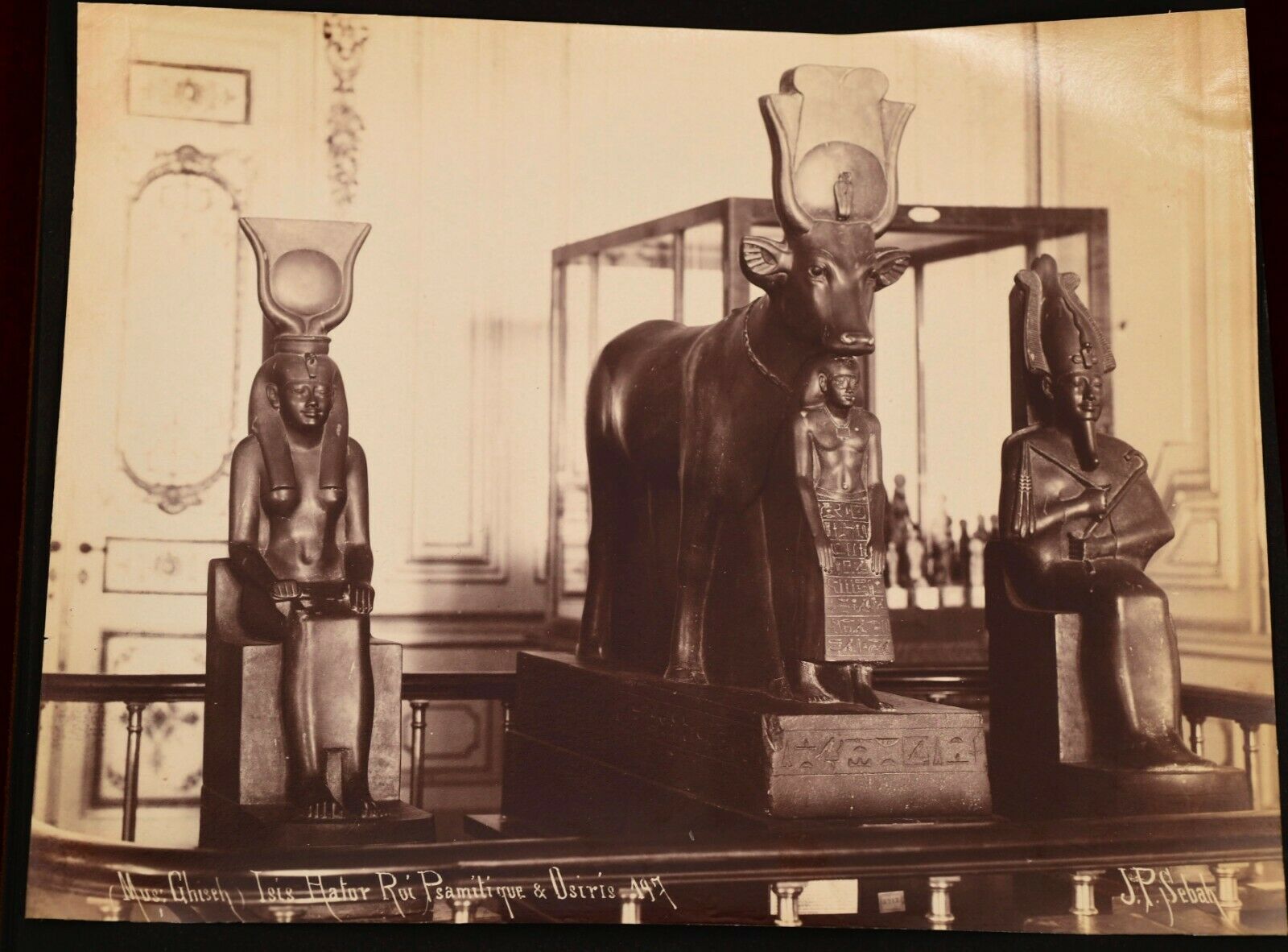-40%
RARE J.P. SEBAH 8 X 101/2 19TH CENTURY ALBUMEN EGYPTIAN GOD'S PHOTOGRAPH
$ 26.39
- Description
- Size Guide
Description
RARE J.P. SEBAH 8 X 10 1/2 SEPIA B&W ALBUMEN PHOTOGRAPH OF EGYPTIAN GODS IN MUSUEM OF GIZA ~ GOOD IMAGE CLEAN CIRCA LATE 1800'S GOT WITH A COLLECTON OF MIDDLE EAST PHOTOS THAT I WILL BE LISTING ~ GREAT EXAMPLE FOR MUSEUM COLLECTION OR COLLECTIVE OF 19TH CENTURY PHOTOGRAPHY ~ TITLE WRITTEN ON LEFT ARE GODS ISIS, OSIRIS, RE, HATHOR & PHAROH PSAMITIQUE (TOMB?) THESE ARE RARE HISTORICAL PHOTOS ~ YOU CAN RESEARCH SEBAH AND HIS SONPascal Sébah was born in Constantinople, then the capital of the
Ottoman Empire
, to a
Syrian Catholic
father and an
Armenian
mother.
[1]
He initially worked in collaboration with the French photographer, Henri Bechard.
[2]
After receiving medals at the International Exhibition in Paris, he decided to open his own studio in Istanbul in 1857.
[3]
Sébah's studio was known as ''
El Chark
(meaning "The Orient"), situated at 439 Grande Rue de Pera in the center of the city and close by the Embassies and hotels where tourists congregated.
[4]
Sébah primarily produced photographs for the tourist trade. By the second half of the 19th-century, tourist travel to Egypt had created strong demand for photographs as souvenirs. Sébah was amongst a group of early photographers, who made their way to Cairo and Istanbul to capitalise on this demand. These pioneering photographers included
Félix Bonfils
(1831-1885);
Gustave Le Gray
(1820-1884), brothers Henri and Emile Bechard; the British-Italian brothers
Antonio Beato
(c. 1832–1906) and
Felice Beato
and the Greek
Zangaki brothers
.
[5]
By 1873 Sébah was successful enough to open a second studio in
Cairo
. He exhibited at Ottoman exhibition in
Vienna
,
Austria
in 1873.
[2]
He established a valuable working relationship with Turkish painter
Osman Hamdi Bey
taking photographs as part of the artist's preparation and in which he experimented with light and shade.
[6]
In turn, Hamdi Bey selected Sébah to illustrate his text on the popular costumes worn by Turkish people, entitled
Les Costumes Populaires de la Turquie en 1873: ouvrage publié sous le patronage de la Commission impériale ottomane pour l'Exposition universelle de Vienne
published in 1873.
[7]
Following his death on 25 June 1886, the studio continued in business. It was managed by his brother, Cosmi, and in 1888 Pollicarpe Joiallier became a partner. At this time the company was renamed Sebah & Joaillier
[8]
Pascal's son,
Jean Pascal Sébah
, also joined in 1888 and went on to run the studio with other photographers. The firm developed a reputation as the leading representative of Orientalist photography and in 1889 was appointed the Photographers by Appointment to the
Prussian Court
.
[9]
Sébah's studio continued operations, in one form or another, until 1952 at the same address then moved until its closure in 1973.
[10]
Sebah, a Catholic, was buried in the Latin cemetery in Ferikoy. His son, Jean Pascal Sébah, is also buried there.












